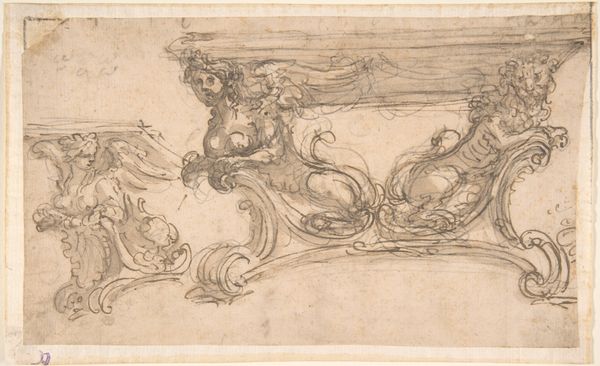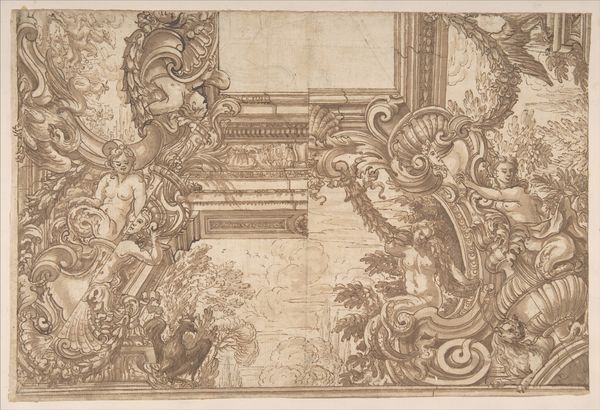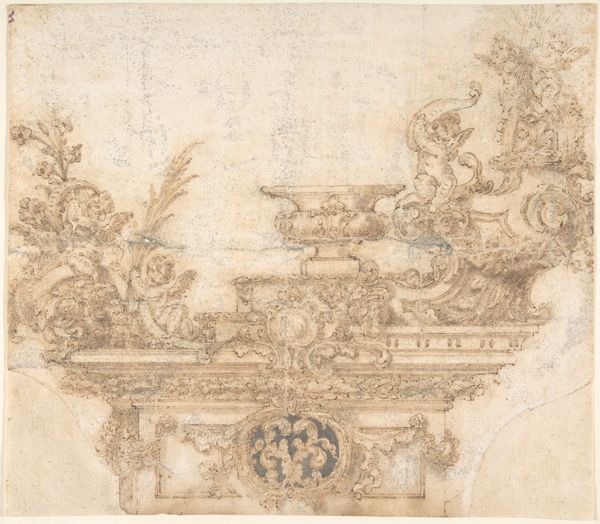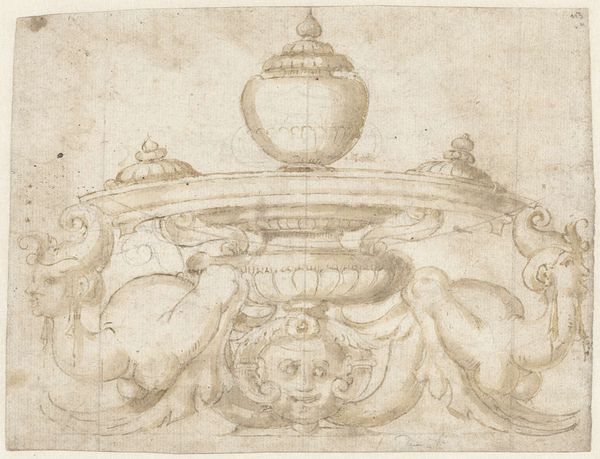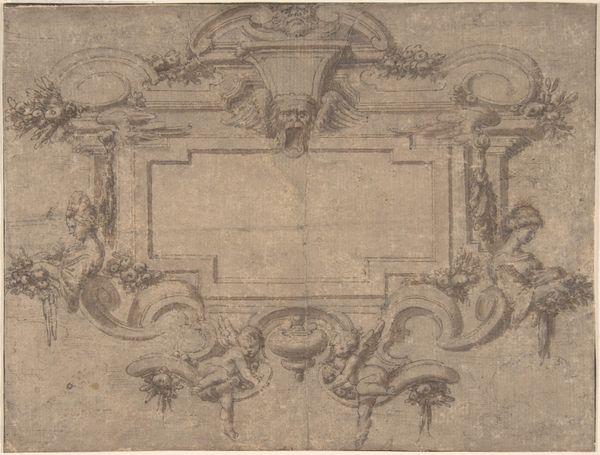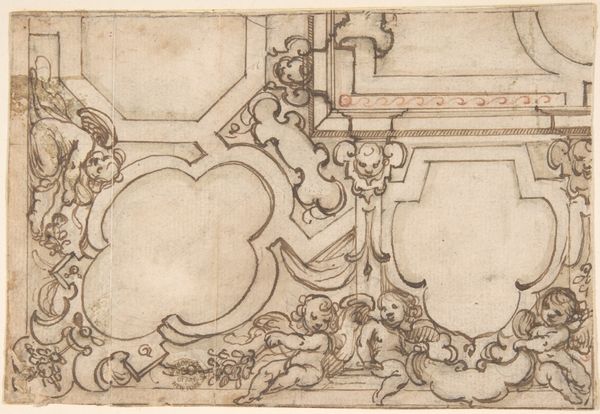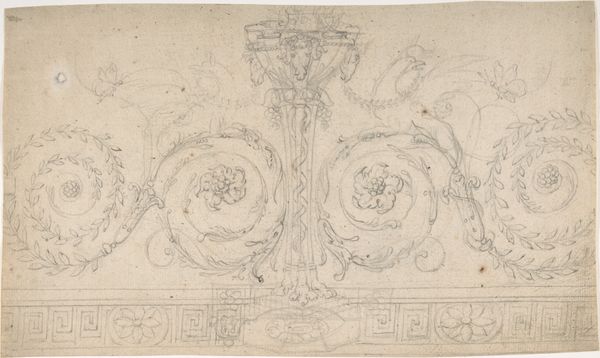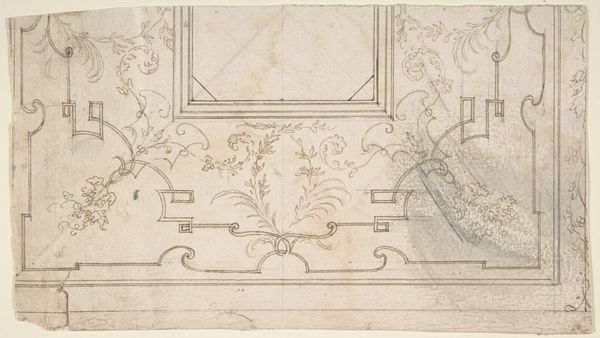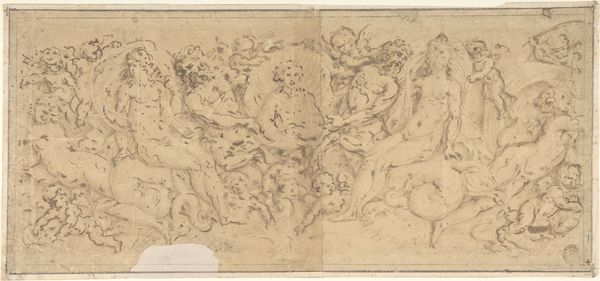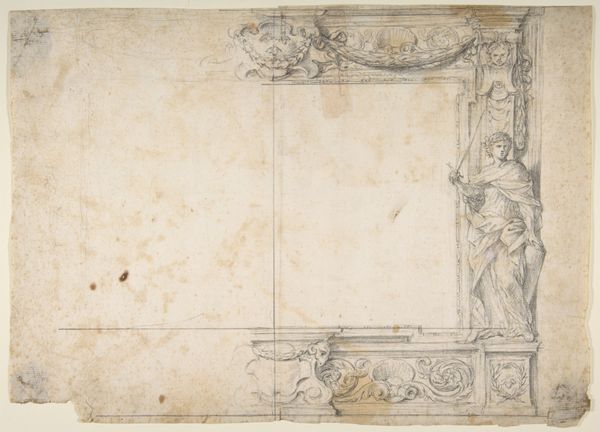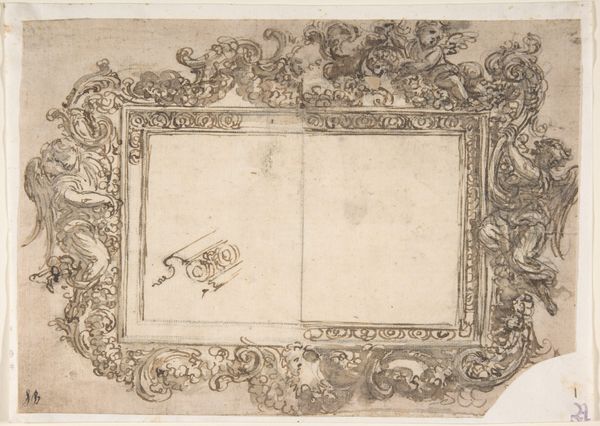
drawing, print, pencil
#
drawing
#
baroque
# print
#
form
#
coloured pencil
#
pencil
#
line
#
decorative-art
Dimensions: sheet: 10 15/16 x 6 9/16 in. (27.8 x 16.6 cm)
Copyright: Public Domain
Curator: Here we have "Right Half of Mirror Frame Design," a 17th-century drawing currently held at the Metropolitan Museum of Art. My first impression is that the dynamism is almost overwhelming. Look at that swirling ornamentation. Editor: It’s intriguing how an object intended for domestic life displays such overt baroque excess. As a design piece, it shows a lot about how craft was mobilized by aristocratic consumerism to broadcast wealth. What exactly is it drawn in? Curator: It appears to be executed in pencil, maybe with some coloured pencil accents as well. Notice the detailed, controlled lines; there’s real skill on display here in rendering all that fine detail. Editor: Agreed, the linework is certainly precise. But think about the conditions of its creation – who was commissioned, what their labor conditions were, and who the intended patron was. It provides valuable evidence of labor relations within a specific luxury market. How do the structural aspects inform the symbolism? Curator: Well, formally, the mirrored symmetry immediately grabs your attention. But also, note how that dense ornamental scrollwork is all meticulously balanced—even mirroring implied. There's a rhythm to it that draws the eye along, despite the apparent busyness of the forms. It's as though the material and composition speak to the inherent order lying underneath all of the outward chaos and splendor of wealth. Editor: Symmetry implies both order and repetition—ideologies inherent in class systems and object reproduction. Did the engraver or workshop employees who handled it gain visibility, and, even better, ownership of their artistic production through such dissemination? Curator: That’s hard to say without deeper archival investigation, which is needed for an object created so far back in time. But if this were the ultimate output? I suppose one might argue its visual appeal hinges so strongly on those inherent design balances—a formalism—as well as the potential symbolic meaning within those precise configurations of line. Editor: Well, as an artifact, it shows how design and labor met to create material wealth, ready for aristocratic consumption. The very design of this print bears witness to socioeconomic interactions, if you analyze it accordingly. Curator: Point taken. Considering the conditions of artistic output makes me consider design aesthetics that aren't readily evident at first glance. It is far more interesting knowing all of that, so thank you for bringing your expertise into play. Editor: My pleasure, hopefully, it sparks our audience to consider such aspects while gazing at and pondering the works within our collections.
Comments
No comments
Be the first to comment and join the conversation on the ultimate creative platform.
